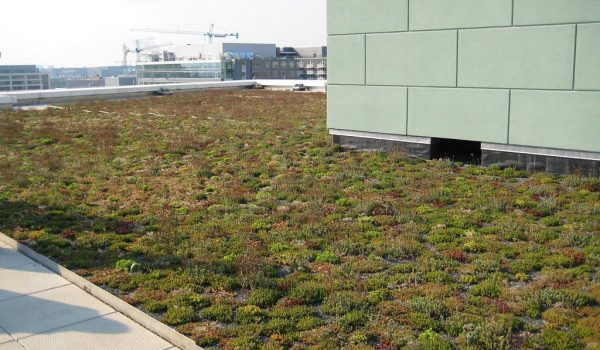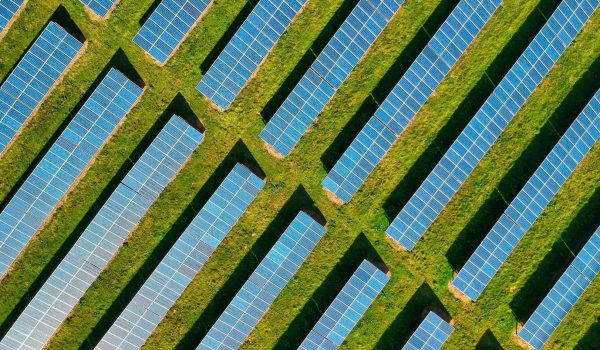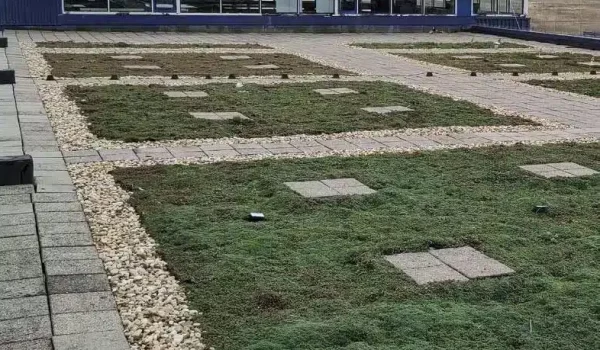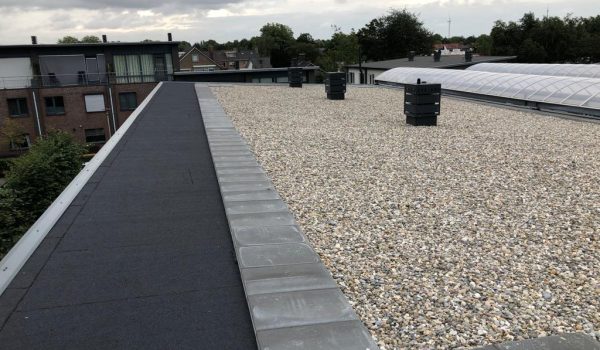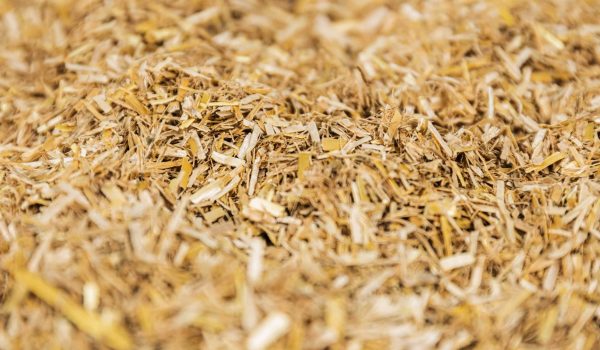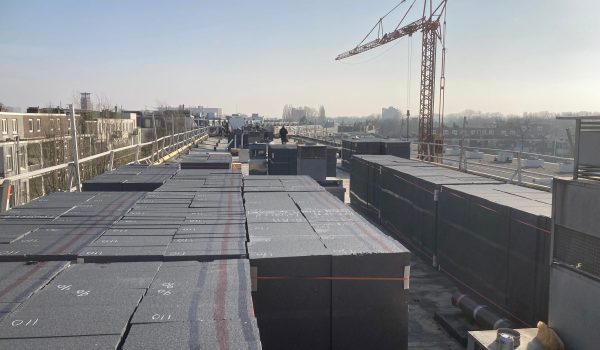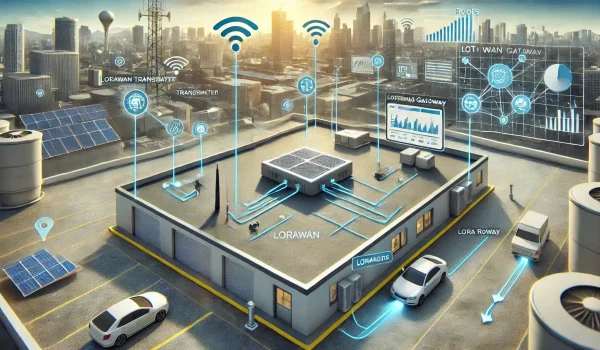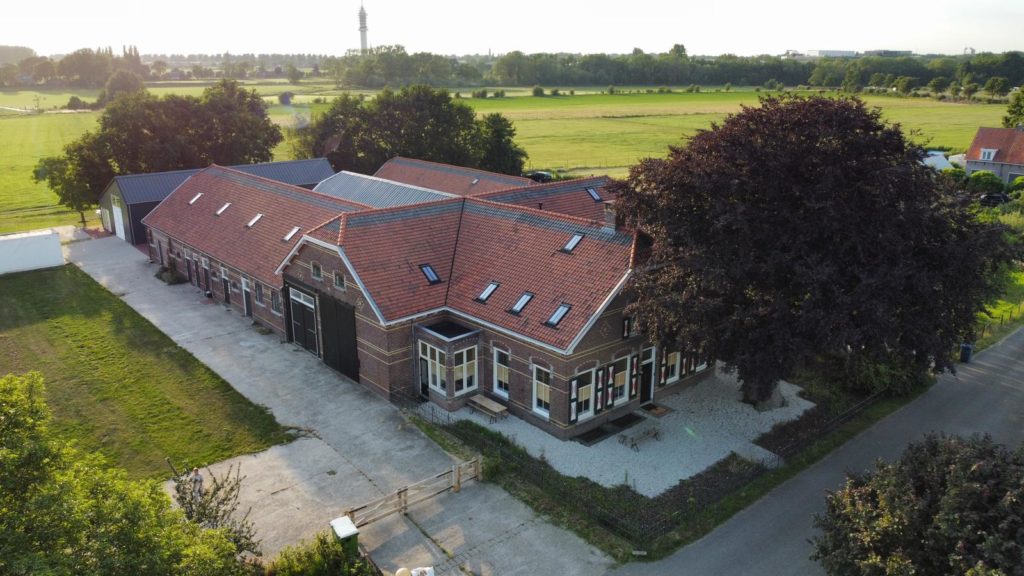Flat roof developments
The roof was black, ugly and mostly had to drain water
Fifteen years ago, flat roofs were seen primarily as functional but unattractive spaces. They were often black, ugly, and designed to keep water out and provide some insulation, with minimal cost. The idea was simple: a roof had to be functional, without much concern for aesthetics or added benefits.
The 'fifth' facade
Today, the perspective on flat roofs has changed dramatically due to growing sustainability aspirations. Modern flat roofs are now considered valuable spaces, sometimes called the "fifth facade." They offer numerous possibilities, such as installing solar panels, green roofs (often with sedum) and water retention systems.
PV panels, greenery and water on the roof
Solar panels, greenery and water retention
Solar panels help generate clean energy and reduce energy costs. Green roofs improve air quality, provide thermal insulation and promote biodiversity. Water retention roofs help control stormwater runoff and prevent flooding.
Risks
However, these innovations also come with risks. The added weight of solar panels, vegetation and water can affect the structural integrity of the roof. In addition, these installations can disrupt the waterproofing, which can lead to leaks. It is also more difficult to inspect and maintain the roof due to the presence of these elements.
Risks
Sensors offer insight
Fortunately, modern technologies such as sensors help manage these risks. Real-time monitoring of moisture levels, temperature differences and structural loads allows owners to detect and address potential problems early. This not only preserves the integrity of the roof, but also optimizes facility performance and minimizes maintenance costs.
Utilize roofs to the maximum
In short, flat roofs have evolved from functional structures to versatile, sustainable spaces. With careful planning and use of sensors, risks can be effectively managed to maximize the many benefits.
- Roof innovation
A good flat roof
Leak detection: prevent damage
We see from the data whether moisture is accumulating in the roof, whether the roof on top is dirty but also what the thermal resistance is in the roof. Based on that data, we alert our customers to risks before damage occurs. We enable our customers to intervene before things go wrong.
Real-time flat roof visibility
Inscio provides a software suite, completely web-based so can be used anywhere, to look at the condition of the roof in real time. Does that mean someone always has to log in to look at the problems? No! We have smart signaling based on roof algorithms, automatically Inscio users are informed about possible anomalies and risks.
Just-in-time maintenance
Property owners, as well as roofers and manufacturers, obviously do not want leaks and damage during the warranty period. Yet differences in temperature and humidity can lead to surprises after only a few years. Inscio ensures that you can intervene exactly in time, neither too early nor too late, through virtually real-time sensor data and signaling on deviations and problems
Fewer inspections, fewer movements, fewer emissions
Property owners perform condition measurements to determine the condition of maintenance-sensitive elements. So too for the roof. This inspection process is time-consuming, labor-intensive and only marginally objective.
Inscio sensors provide objective readings, i.e. an actual picture, of the roof remotely. There is no, or much less, need to inspect roofs and therefore delivers a huge reduction in movements and thus emissions.
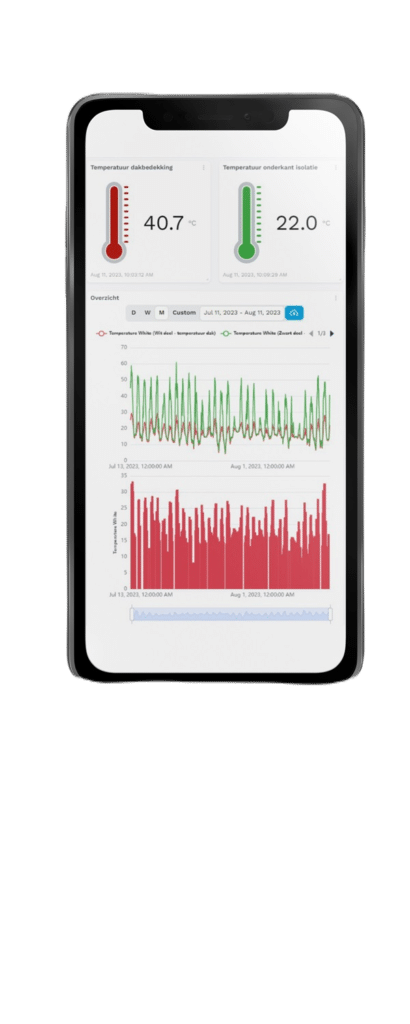
Our customers tell
"Until last fall, we informed clients and partners about expected roof behavior based on practical experience. Now we provide objective measurement data"
Laurens van Wylick - Isomix insulating mortars

